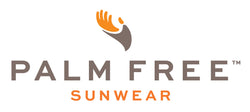Squamous Cell Skin Cancer on the Hands
Often I receive emails from customers asking about maximum sun protection for the back of the hands. They explain they have recently undergone Mohs surgery for a type of skin cancer called Squamous Cell Carcinoma (SCCs) on the hand. This by far is the most common skin cancer found on the back of the hands; basal cell carcinomas come in second and melanomas third.

SCCs mostly develop from precancers, called actinic keratosis(AKs). Since the back of the hands (dorsal hands) are almost always exposed to the sun, the cumulative Ultraviolet Radiation (UVR) penetrates into the skin and damages the cellular DNA (skin cell blueprint). The DNA is responsible for coding the next copy of skin cell. With the DNA damaged, the next skin cell created is flawed. This is where it all begins; the AK.

Once a bad copy is made, there's another, then another. If AKs are not treated they can progress to SCCs. These types of skin cancers normally do not go into the rest of the body (meaning they rarely metastasize) if treated appropriately. However, if they are large (over 3/4 of an inch), fast growing (increased growth within a month), or the cellular make up is severely irregular (described as poorly differentiated) or growing along nerve cells, they can be problematic.

The standard of care in the US for treating SCCs on the hands is by Mohs Surgery, a special type of skin surgery in which the cancerous skin is removed with clear margins and to preserve the normal surrounding skin.
The key to preventing skin cancers on the hands is protection and knowing your risk. Many people say, 'the damage is done, protection won't help me now'. This is not true, what most people don't realize is the sun puts an immunosuppressive effect on the skin. So, if you have a collection of altered skin cells (AKs, history of skin cancer) you are increasing your risk to develop more skin cancers if you do not protect your skin.
The difficulty with wearing sunscreens on the back of the hands is the cream migrates to the palm and everything you touch now has sunscreen on it. Or, you wash your hands or unknowingly wipe it off. The PalmFree™SunGlove was created to solve this problem: a hand cover made with UPF 50 fabric that is easy to slip-on and slide-off while the palms and fingers keep their tactile sensitivity and ability to hold or grip any utensil or sporting tool.
Bottom line: if you have a history of AKs or any type of skin cancer be sensible and start wearing protection regularly. You will save time, money, and most importantly, your skin.




